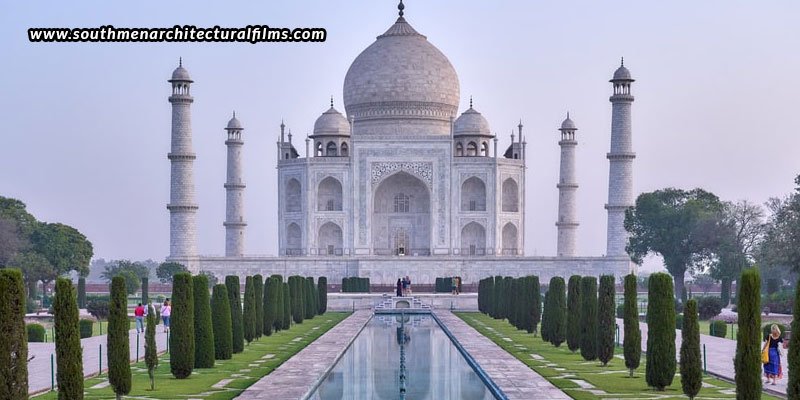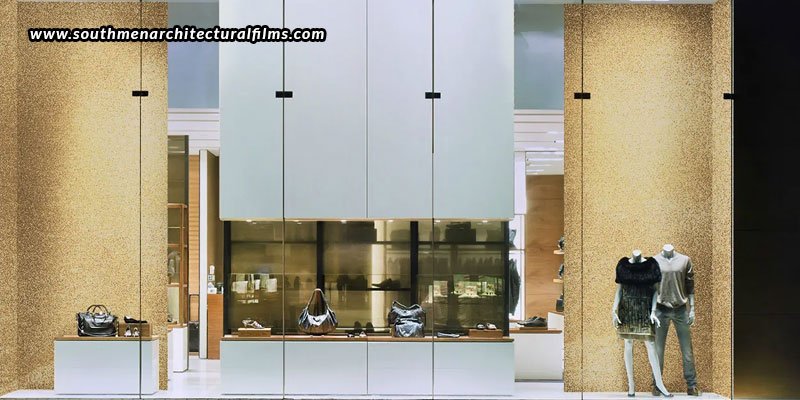For centuries, marble has symbolized more than just architectural beauty. It stands as a global symbol of culture, creativity, and enduring human accomplishment. From the Parthenon in Greece to the Taj Mahal in India, marble embodies the spirit of empires, spirituality, and exceptional design. Its allure and resilience have motivated countless generations, yet it is surprisingly delicate. Exposure to the environment, pollution, and human contact gradually wear down even the most renowned marble edifices. In the present day, cutting-edge preservation techniques – especially marble protection films – are crucial in preserving these masterpieces while maintaining their original integrity. This article delves into the cultural heritage of marble across the globe and examines how contemporary protective methods are prolonging its existence for future generations.
Marble through the ages: A global perspective
- Greece
Marble served as a fundamental element in the architecture and sculpture of ancient Greece, renowned for its clarity and brilliance. Extracted from Mount Pentelicus and Naxos, it was skilfully shaped into iconic edifices and artworks that characterized classical antiquity. Notable works like the Parthenon and the Venus de Milo exemplify not only remarkable craftsmanship but also the philosophical concepts of symmetry, harmony, and perfection.
Cultural symbolism: Marble represented divine purity, physical idealism, and the quest for truth and order – key themes in Greek philosophy and aesthetics.
Modern preservation: In contemporary times, numerous ancient Greek marble creations are either displayed in climate-controlled museums or safeguarded in their original locations through advanced environmental monitoring and protective films that shield against acid rain, UV rays, and urban pollutants, all while preserving the stone’s original integrity.
- Rome
The Romans transformed the use of marble by extensively integrating it into public buildings, statues, and fountains. They sourced marble from various regions of the empire – Greece, Egypt, Tunisia, and more – to embellish structures with unparalleled magnificence. The grand columns of the Pantheon, the sculpted reliefs of Trajan’s Column, and the marble-adorned villas of emperors all serve as evidence of Rome’s imperial power and artistic refinement.
Cultural symbolism: For the Romans, marble symbolized authority and cultural supremacy. It was frequently employed to commemorate emperors, portray deities, and honour military triumphs.
Modern preservation: Currently, many Roman monuments benefit from a combination of traditional stone sealing techniques and modern protective film technologies that provide resistance to corrosion, acid rain, and graffiti while preserving the historical authenticity of the surfaces.
- India
India’s profound connection with marble is perhaps most vividly illustrated by the Taj Mahal, which is entirely made from radiant white Makrana marble. Commissioned by Emperor Shah Jahan in the 17th century as a mausoleum for his cherished wife Mumtaz Mahal, this structure stands as a timeless emblem of love and artistic excellence. Its elaborate inlays, domes, and symmetrical architecture are celebrated globally.
Cultural symbolism: In Indian architecture, marble signifies purity, devotion, and eternity. It is frequently employed in temples, tombs, and palaces to express reverence and spiritual elegance.
Modern preservation: Conservationists in India are currently investigating transparent marble protection films to shield against pollution, acid rain, and environmental discoloration, particularly as industrial emissions pose a threat to the immaculate white appearance of historic sites like the Taj Mahal.
- Italy
Italy’s relationship with marble is deeply intertwined with the narrative of the Renaissance. Extracted from the renowned Carrara region, Italian marble has inspired artists such as Michelangelo, whose sculpture of David remains a hallmark of human creativity. From cathedrals in Florence to Roman churches and fountains, marble has significantly influenced Italy’s artistic and spiritual heritage for centuries.
Cultural symbolism: In Italy, marble embodies divine creation, intellectual enlightenment, and the human aspiration to enhance nature through art. It connects the sacred and the secular in both architecture and sculpture.
Modern preservation: Italian institutions are now employing non-invasive marble protection films in museums, churches, and historic homes. These films safeguard both indoor and outdoor marble surfaces from foot traffic, pollution, and climate variations, without changing the texture or finish.
- Middle East
In the realm of Middle Eastern architecture, particularly within Islamic design, marble is highly regarded for its cooling attributes and aesthetic purity. From the elaborately carved walls of mosques to the grand domes and mausoleums, marble serves as a medium for calligraphy, geometric patterns, and spiritual symbolism. The Sheikh Zayed Grand Mosque in Abu Dhabi stands as a contemporary wonder, showcasing vast marble courtyards and intricate inlays.
Cultural symbolism: In this context, marble embodies divine perfection, spiritual clarity, and the everlasting essence of religious devotion. Its reflective nature often symbolizes light, serving as a metaphor for the divine presence.
Modern preservation: In areas subjected to intense sunlight and sand, protective coatings are increasingly utilized to maintain the brightness of marble and prevent surface degradation. These methods ensure that buildings continue to be revered spaces of beauty while preserving the material’s original spiritual and aesthetic purpose.
Preserving cultural heritage in the modern age
As guardians of our collective cultural heritage, we encounter a new challenge: how to safeguard these historic marble treasures while maintaining their authenticity. Whether it’s the ancient columns of the Parthenon or the marble floors of a Mughal-era palace, each piece narrates a story that must be preserved for future generations. This is where contemporary preservation technologies come into play – not to modify, but to protect. Conservationists, architects, and historians are now utilizing tools that resonate with this philosophy, with one of the most promising advancements being transparent marble protection films.
From monuments to modern spaces
While the Taj Mahal and the Acropolis may be regarded as the world’s most iconic marble masterpieces, marble continues to embody elegance in today’s modern environments – luxury hotels, boutique galleries, upscale residences, and grand lobbies. These modern settings, although vastly different in context, reflect the same artistic appreciation and design intent. The principle that links the past and present is evident: preservation is not merely about protecting history; it’s about honouring intention. By applying marble protection films to contemporary interiors, we demonstrate a forward-thinking respect for craftsmanship. With proper care, modern marble installations can age gracefully, preserving their beauty and functionality for decades. Just as we protect ancient monuments, we must also defend today’s creations so they may evolve into the heritage of tomorrow.
Marble films – A non-invasive solution
Maintaining marble surfaces often necessitates a careful approach, particularly when it comes to preserving both aesthetics and authenticity. Conventional techniques such as chemical coatings, regular polishing, or restorative treatments can sometimes modify the marble’s original hue, finish, or even texture. This is where marble protection films present a revolutionary solution. These ultra-thin, transparent, and breathable films are crafted to adhere flawlessly to the surface without compromising its visual charm or tactile sensation. They are non-invasive and reversible, making them perfect for both historical preservation and contemporary interiors. These films protect against environmental hazards – UV rays, spills, dirt, and scratches – while allowing the natural beauty of marble to shine through. Whether applied in a heritage site or a newly constructed residence, they offer reassurance without sacrificing design integrity.
Marble films – Guardians of craftsmanship
Every marble installation, whether ancient or modern, stands as a tribute to human creativity and craftsmanship. However, that beauty is perpetually at risk from time, touch, and environmental factors. From museum floors traversed by thousands daily to intricately carved temple facades subjected to acid rain and pollution, marble faces significant challenges. Marble protection films have arisen as quiet defenders of this artistry. These cutting-edge layers provide an almost invisible barrier, shielding marble from dust, moisture, UV damage, graffiti, and physical deterioration. Their function goes well beyond mere protection; they act as a connection between historical appreciation and contemporary accountability. By utilizing these films, we safeguard not only the stone but also the effort, vision, and cultural significance behind it. They enable the public to engage with marble in everyday environments while ensuring that the artistry beneath remains unblemished, respected, and preserved for future generations.
Southmen marble protection films
Just as architects and conservation experts rely on advanced protection films to preserve the integrity of grand marble structures – temples, palaces, and heritage buildings – you too can bring that same level of care into your own space. Whether it’s a marble countertop in your kitchen, a polished floor in your living room, or decorative cladding in a boutique or office, Southmen offers tailored solutions that reflect the same preservation principles used in cultural landmarks. Specializing in marble protection in Jayanagar, Southmen brings to you high-performance films that safeguard your surfaces from stains, scratches, and wear, without compromising the natural beauty of the stone. With Southmen, you’re not just protecting a surface; you’re extending the legacy of marble as a timeless material, beautifully maintained for everyday life.




